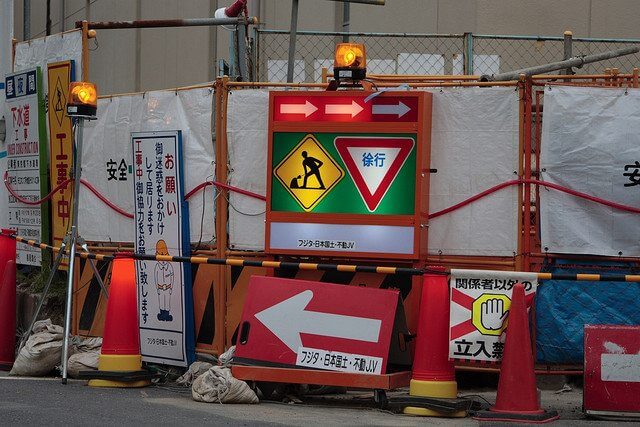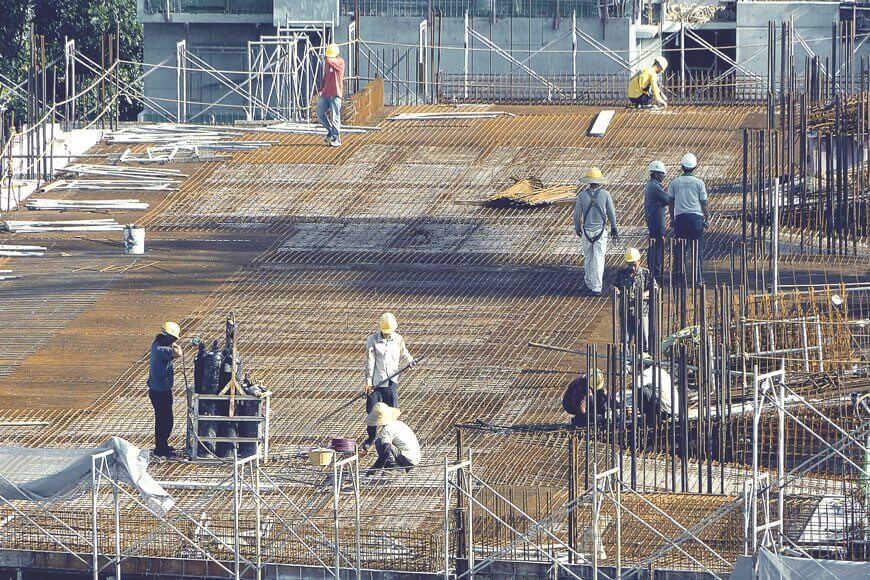There is a bit, a very small bit, of a plus-side to all the site paperwork we are so used to. In times of no “construction technology“, if there were youngsters on site we could foist off onto them the job of distributing all the bits of paper around the site to whoever needed them. If we have that luxury it worked out to be educational for the youngsters because they got the chance to see what all the Trades were actually doing. It also gets them out from under our feet for a while. But if we haven’t got these young “postmen”???
I remember very well the time I moved from jobbing building to being a site manager on a housing development estate. The lads used to clear off-site at about five in the afternoon and I might be sat there until about eight in the evening just trying to get all the paperwork sorted and filed. You notice what a good boy I was. Many site managers just couldn’t be bothered, can read well enough, to get all the paperwork filed away so it could be found again. Walking to one of their offices and paperwork would be heaped all over desks, filing cabinets and even on the floor. This made it a very difficult job to find any bits of paper that needed to be referred to the future time.
A couple of years later I moved up to commercial construction and things got even worse. The lads might be on site till all hours but I could be there until 10 o’clock at night just fiddling with bits of paper. Again, I was a good boy. Those site offices where the site paperwork was just acting leaps all over the place created in even bigger problem finding the right bits of paper for future reference.
Time and moved on though and by about 1991 I was very cutting edge. I had a laptop computer on site and got comments like “Gosh! Fancy a mere site manager having a computer on site!” Then, probably a year later, I was working on an office fit out when one of the guys was using a laptop computer upon which he had the drawings for his work. I never did find out how we got them. Anyway, the mere fact that I did have a laptop with me on site meant that some of the paperwork, at least, was reduced. It meant I got emails instead of memos, letters and a few other bits of paperwork. However, all that was 25 years ago and now we are living in today’s world. Computers, tablets and smartphones are something that everyone working on a construction site has in their possession. All that is required now is the best construction technology to use on all these gadgets.
So let’s have a look at how Construction Technology can save time. Well, from the above, obvious, “innit”? Without all the paperwork people don’t have to run round the site trying to find the right people to hand paperwork on to or to bring them up to date with the relevant information. Then, for site management, it means that ours are not spent filing it all away in logical order so that can easily be found for future reference. Letters assume a fairly small commercial construction site with a single site manager on it. The use of a comprehensive Construction Technology package will say this man at least four hours a day that he doesn’t have to spend on paperwork. For the skilled tradesmen it isn’t as simple to put an actual time Construction Technology might save them every day but we can be fairly sure that it will. In fact, it might save him an awful lot of time. An example of this would be when, as happens, he has actually lost his copy of the drawing that he used while it was working. That means that he would keep having to trot into the site office to have a look at the copy of the drawing there. To order a new copy for him and to get it posted usually takes about a week. That can add up and is very annoying for a man on price work. If he is using Construction Technology his drawing that he needs will be on his tablet and could be referred to instantly.
So now let’s have a look at how the right comprehensive construction technology can save money. A couple of years ago I did a calculation on the cost of paperwork. What I found was that on a commercial construction project valued at £5 million and lasting six months the cost of handling and storing the paperwork came to the ridiculous sum of £68,000! In all fairness that wasn’t just on site. It included the client, architects and consultants as well as the main and sub- contractors. A large part of that total, though, was saved by the main contractor. Usually the site manager and the Quantity Surveyor on the job require an office container each simply because all the filing cabinets, shelves and ring binders take up so much room. Without paperwork one 20 foot container with a dividing partition would be quite enough space for both of them. Now let me stress that the pounds £68K that I came up with was only the cost of handling and storing the paper. I have absolutely no idea how much money the paper that the paperwork was on actually cost! Anyway, the main contractor the cost of storing the paperwork must work out to be around £40,000. As he probably tendered with something like a 1% profit margin which would be £50,000 an extra £40,000 must be very, very welcome. For future contracts that this company tenders for they now have an option; they can reduce their tender prices and hope to get more contracts or they can tender on the previous basis, hope to get an equal number of contracts. Either way they can confidently expect that their annual return is going to look much healthier.
The other aspect of construction technology saving time comes about simply because those working on the project are not wasting their time because of the paperwork. This means that they can concentrate more fully on getting the job done. What happens then is that, so often, the project is ready for handover to the client before the official end date. Major money-saving on site overhead costs!
So that just leaves us to have a look at how the right Construction Technology package can save jobs. This isn’t such an obvious factor is the saving of time and money. We do know, though, that the nature of construction employment is “hire and fire”. Historically this is an absolute necessity simply because the profit margins on a project are so low that there is no cash in the bank to be able to pay for people who are not immediately gainfully employed. With the use of construction technology, though, the profit margins are higher which means there is more money in the bank. Any sensible company will use this money to keep their good employees who have proven themselves on the last project on their books until their next project starts. If they do not do this it is pretty certain that for the next project they shall have to use Agency people. Now those freelancers working through agencies do earn a little more per week than do permanent staff. However, once the Agencies stick their handling fees on these people end up far more expensive than permanent staff.
Well, we have now seen how a Construction Technology package can save time, money and jobs. All that remains is to ask ourselves the question as to which is the best, most comprehensive of the Construction Technology packages. As you are reading this article here it must pretty obvious that the Construction Technology package to use is GenieBelt. It does absolutely everything for everyone involved in the project. All information and all documentation is instantly available on PC, tablet or smart phone and is held in the Cloud. Everyone involved in the project can upload their own data to GenieBelt from whatever gadget they are using.
There just remains one question to be answered; how much money does GenieBelt save? Well, on that £5 million project that runs for six months and for which the paperwork handling costs alone would be around £40,000 for the main contractor, GenieBelt will cost around a very modest £10 per month for the six months of the project duration. That represents a money-saving of £39,940. Surely the only companies which wouldn’t grab this are those hell-bent on going bankrupt!
– Everyone, go GenieBelt to save time money and jobs!




